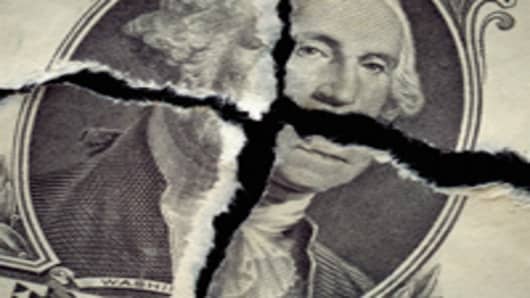While the dollar appears increasingly “cheap” on a backward-looking basis, structural changes in the global economy – mainly outside the U.S. - could pull the dollar down further, potentially significantly.
The US remains by far the world’s largest economy, accounting for 27% of global GDP in 2009 (JPMS LLC data). The US dollar, meanwhile, continues to enjoy its place as the most traded currency in the world: The Bank for International Settlements (BIS) latest survey showed that a dollar was used in nearly 87% of all currency transactions as of 2010.
Given this, it's all the more surprising what is happening in currency markets today. Structural, macro-economic changes, especially in emerging-market and commodity-producing countries, are increasingly driving the dollar, rather than the dollar driving everyone else’s currency. We believe this could result in a resetting - lower - for the dollar’s long-term fair value, even though the trade-weighted dollar is already close to its weakest point since the early 1970s. The tail, we believe, is starting to wag the big dog of the currency world.
One of the few rules governing FX markets is that floating currencies revert over a multi-year period around some “mean,” or fair value. Some market-watchers think of fair value in terms of Purchasing Power Parity (PPP), popularized by The Economist's Big Mac index.
Such longer-term FX oscillations are pretty easily explained by economics. When a currency appreciates to a certain point and/or for a sustained length of time, that country’s exports usually get less competitive, becoming a drag on growth. At the same time, the stronger currency helps control inflation pressure. Expectations of slower growth and relatively less inflation risk tend to lead investors to reduce expectations for central bank policy interest rates (the currency’s “yield”). The change in expectations as well as actual growth-inflation dynamics often lead investors to pare back exposure to assets denominated in that currency, which in turn generates FX depreciation, until the now-weak currency reverses the macro tide again.
There is a critical caveat to the concept of currency fair value. Structural changes in underlying economies which impact variables such as terms of trade, inflation or interest rates can raise or lower a currency’s fair value. We believe such a shift may be happening today for the U.S. dollar.
Some might argue that US debt/ GDP ratios at 70%, with nearly $14.4 trillion in debt as of 2010, up from $4.2 trillion only a decade earlier, could be a structural change for the US. We believe these fiscal dynamics merit close attention – large debts and deficits, if sustained, certainly could impact capital flows to the U.S. on a longer-term basis. Further, US policy officials have been unusually silent during these last two years of the dollar’s decline. It may well be that the US is comfortable with a slowly weakening dollar in that it helps growth via exports and limits deflation risks.


